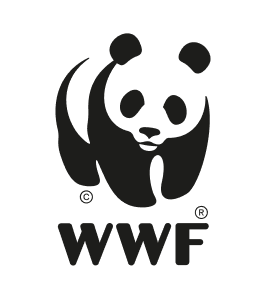The Living Planet at Campus is an esteemed educational program provided by WWF Canada exclusively for post-secondary school students. We were approached by WWF Canada with the responsibility of refining the site’s branding to achieve a higher level of sophistication and cleanliness. Our paramount goal was to significantly enhance the user experience for students actively engaged in the program throughout their academic journey.
ROLE: UX Project Lead
DURATION: 1 Years | March 2022 – Present
TOOLS: Adobe XD, Principle, Xmind
00 Project context
The primary goal of this project was to identify and resolve user experience issues faced by students, campus partners, and administrative staff involved in the WWF Living Planet at Campus program. The program administrators sought to enhance the experience to improve student retention rates.
We utilized an existing website, which provided valuable historical data. This data proved instrumental in allowing our team to gain insights into the program’s workings before initiating the research phase.
Design Process
Followed HCD process throughout three weeks
Research
Research Synthesis
Ideate & Design
Design Evaluation
Final Design
01 Understand & Define
Understanding the current state:
The LPL program, provided by WWF Canada to post-secondary students for the past 8 years, initially commenced as an in-person initiative held at designated campuses, involving coordination with institutional administrative staff. Subsequently, the program transitioned to a digital platform. Scratch was engaged to enhance the visual appeal and functionality of the existing digital educational program, aiming to optimize user engagement and interaction.
Research:
The WWF team provided us with preliminary data curated by their analytics team. This served as a robust starting point in comprehending user journeys and identifying points of user drop-off.
Subsequently, we initiated the research phase, which encompassed conducting individual interviews with esteemed stakeholders. This pool included both former and current students, campus sustainability partners, sponsors, and WWF administrators.
Our collaboration with the research team facilitated the development of a comprehensive interview script. While existing project insights or research prove advantageous, they also possess the potential to introduce bias. Our partnership with the research team was pivotal in safeguarding against any inadvertent biases influencing our focus group sessions and one-on-one interviews.
Finding Synthesis | Personas
During the research phase, we meticulously formulated four primary user personas. This strategic step facilitated the synthesis of our gathered research, aiding in the creation of a cohesive framework.
Consequently, armed with these well-defined user personas, we were able to establish clear hypotheses before embarking on the wireframe development process.
02 IDEATE
DESIGN GOAL
During the persona development process, we acquired valuable insights into the distinct needs and obstacles faced by students at different educational levels, as well as sustainability partners/administrators within educational institutions, and administrators of the WWF Program. This led us to articulate our research design question.
“How might we enhance the user experience for students and administrators engaged in the Living Planet at Campus program, enabling effortless updates, streamlined changes, and active participation in WWF educational programs? This would empower them to effectively communicate significant insights regarding environmental impact and drive more impactful change.”
In relation to our research question, we conducted an expedited ideation session to generate practical and viable solutions. Drawing insights from our persona, we crafted a user journey map that outlines a potential experience for prospective candidates. This comprehensive mapping allows for a detailed analysis of various elements within the journey, presenting opportunities for implementation that could potentially:
- Enhance student user experience so they don’t get frustrated at the bugs on the current site.
- Foster efficiency and facilitate smoother processes for the administrators to make changes and update content in the program with up-to-date research.
- Make it more engaging and fun for students to participate. And streamline communication/contact with student for reminders etc.
** User Journey and Site map were completed at this stage, however, I am unable to present them in my portfolio.
03 PROTOTYPING & TESTING
WIREFRAMES
In each design iteration, we begin with low-fi wireframes, using whiteboarding or paper sketches. This step is essential to maintain the intended informational architecture.
Next, we move on to mid-fi wireframes for feature testing and client feedback to ensure their satisfaction.
Finally, based on the input received, we create high-fi wireframes and prototypes for the conclusive stage of user testing.
USER TESTING
HIGH-FI PROTOTYPE
We conducted three rounds of user testing using prototypes of varying fidelity, employing different user testing methods aligned with each round’s specific objectives. During the initial phase with the lo-fi prototype, we focused on the discovery journey, aiming to gain insights into user perceptions of the experience and their underlying needs.
Transitioning to the mid-fi prototype, we assigned users specific tasks to complete and utilized the think-aloud method to gather valuable feedback on enhancing usability.
To achieve a comprehensive understanding of user interactions, we recognized the necessity of testing with a functional prototype.
As a result of these testing sessions, we identified three key areas requiring modification:
The dashboard required enhanced clarity, necessitating a well-defined action-oriented interface and coherent site architecture.
A requisite was the establishment of a user-friendly method to prompt students about their last point of engagement. Given that students often invest months or even years in completing programs on the LPL site, a recap or reminder of their progress became essential.
The program’s framework was perceived as conventional and lacking in engagement. Testers found it straightforward to navigate, akin to other online educational platforms they are accustomed to. Our aspiration was to draw inspiration from the interactive nature of platforms like Duolingo, aiming to diverge from the conventional approach seen in a First Aid course.
In response to these findings, we proceeded to make appropriate adjustments to the prototype.
04 Refelections
Design with an objective.
The process of redesigning a pre-existing educational program was not without its considerable challenges. As is inherent in any design endeavor, the integration of feedback and the iterative design process proved to be of paramount importance.
The development of an immersive educational platform for students necessitated a shift in perspective beyond the confines of the application itself. The focus shifted towards enhancing our communication strategies with the users. Given the demanding schedules of students, a common challenge arose where program completion could be inadvertently overlooked. Addressing this, we leveraged email marketing in tandem with the integration of communication functionalities within the system steps. This approach contributed to a more robust and harmonized communication process.



